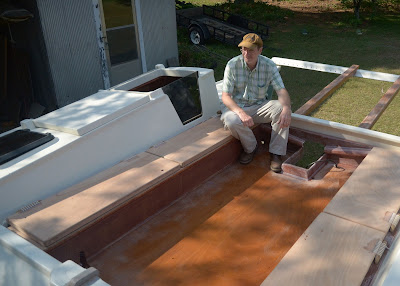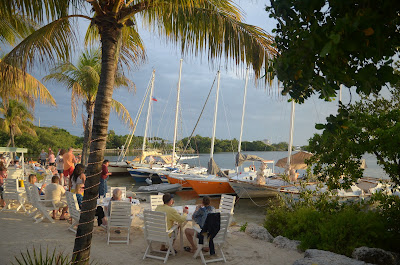Sailing the Apocalypse: A Misadventure at Sea, is the story of a man who is obsessed with the idea of building a big Wharram cat (Tiki 46) to get his family away from what he believes is a country on the verge of collapse. Terry Bailey has done his research and knows the advantages and virtues of a Wharram for his purpose. He greatly overestimates both his boatbuilding and sailing experience, however, and the story becomes a series of screw-ups and misadventures as he forges on with more determination than good seamanship. This book, at 304 pages, is the first in what will be an ongoing series that follows this family's adventures. I think most Wharram enthusiasts, as well as boatbuilders and sailors in general will be able to relate. The full description is posted below the cover image. You can get a copy of Sailing the Apocalypse in either ebook or paperback from the links at the bottom of this post.
Terry Bailey is convinced America is doomed, and the last hope for his family is to escape to sea.
How far would you go to protect your family if you were convinced America was in imminent danger of collapse? Would you build an underground bunker and stockpile it with weapons and supplies? Buy a cabin in the woods and start growing all your own food? Sell everything off and move to a survivalist’s stronghold in the mountains of Idaho?
None of the above would be enough if you were obsessed with boats the way Terry Bailey is obsessed.Terry has an escape plan to sail to the very ends of the earth; the only real option left to survive what’s coming, according to him. Convincing his new wife, teen stepdaughter and preteen stepson that time is running out, he sells his recently-acquired family on the necessity to build a boat. Two years of hard labor later, Terry has his ship—a huge ocean-going catamaran sloppily cobbled together from plywood and epoxy in their backyard in north Mississippi.
When the ship is ready to launch, Terry christens her the Apocalypse, and the four of them move aboard for good, bidding farewell to life on land along with everything and everyone they had known before that day. There is no need to wait for a disaster to strike, because Terry Bailey has created his own. Now he is about to drag his entire family over the horizon with him. Sailing the Apocalypse is the story of a man who is about to go too far, and is told from the perspective of the twelve-year-old stepson who watches it all unfold as he is swept along for the ride.
Sailing the Apocalypse is available in ebook form from Amazon Kindle, Apple iBooks, Barnes & Noble, and Kobo.
You can get the paperback from Amazon and Barnes & Noble.
Both formats are available in the various Amazon stores worldwide as well (UK, France, Germany, Australia, etc.).













































